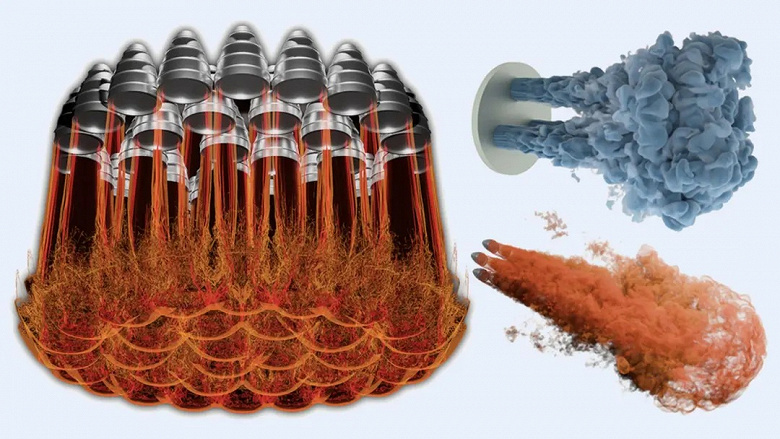A group of American scientists utilized the exaflop-class supercomputer El Capitan to conduct the largest hydrodynamic simulation in history. In one computational fluid dynamics (CFD) task, more than one quadrillion degrees of freedom were processed. The simulation focused on studying rocket engine exhausts, but the developed method is applicable to a wide range of tasks-from predicting aircraft noise to biomedical hydrodynamics.
In particular, scientists studied the interaction of exhaust jets from several rocket engines operating simultaneously, modeling the turbulent gas outflow. The researchers achieved an 80-fold increase in calculation speed compared to previous methods, reduced memory usage by 25 times, and decreased energy costs by more than five times. By combining algorithm efficiency with El Capitan’s chip architecture, they demonstrated that simulations of this scale could be completed in hours rather than weeks. For this work, the team was a finalist for the ACM Gordon Bell Prize 2025-the highest award in high-performance computing.

To solve the complex task of modeling turbulent exhaust gas flows generated by the simultaneous operation of multiple rocket engines, a new method of shock wave regularization was used, named Information Geometric Regularization (IGR). In the simulation, the team reached over 500 quadrillion degrees of freedom, using all 11,136 nodes and over 44,500 APU AMD Instinct MI300A processors on El Capitan. The simulation was later expanded on the Frontier supercomputer at Oak Ridge National Laboratory (ORNL), surpassing the one quadrillion degrees of freedom mark.
The obtained results reproduce the dynamics of exhaust gases of a complex configuration, modeled after SpaceX’s Super Heavy booster. The conducted simulation sets a new benchmark for exaflop performance and memory efficiency in computational fluid dynamics. It paves the way for rocket development using computational modeling, replacing costly and limited physical experiments with predictive modeling at unprecedented resolution.
In the context of private spaceflight development, as the authors note, launch vehicles more frequently use arrays of compact high-thrust engines rather than a few large boosters. This design provides advantages in manufacturing, engine redundancy, and simplifies transportation, but also creates new challenges. When dozens of engines work together, they interact in complex ways, which can lead to hot gases returning to the base of the rocket, threatening mission success. The new modeling technology will allow for more effective solutions to this problem.









